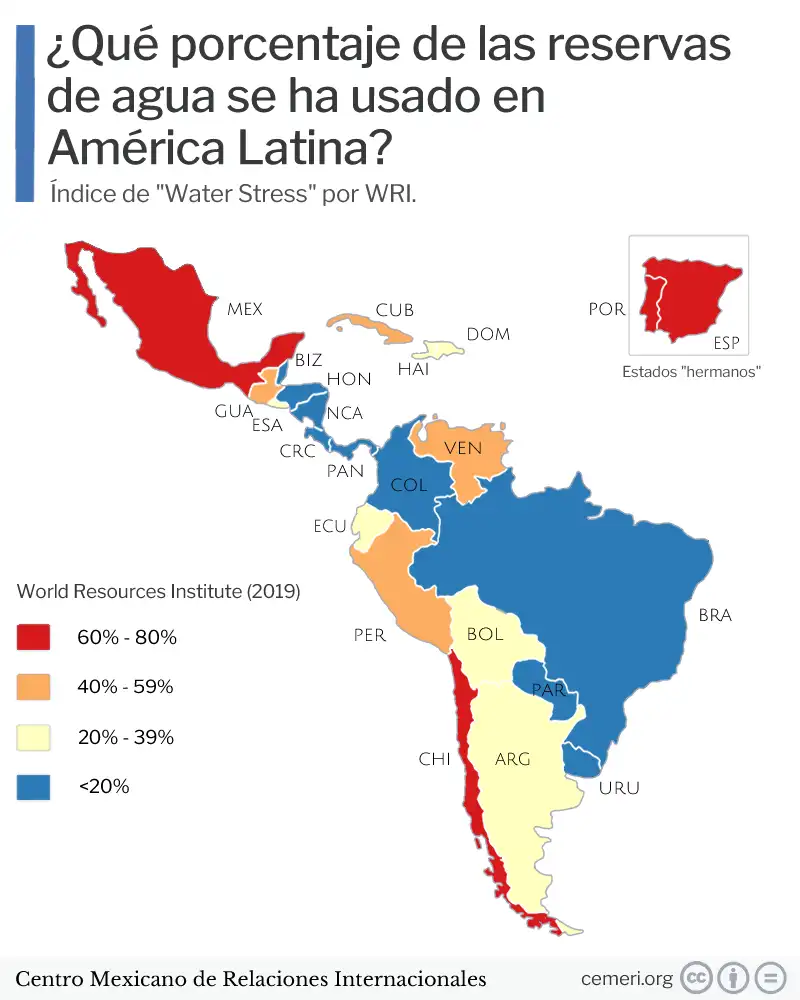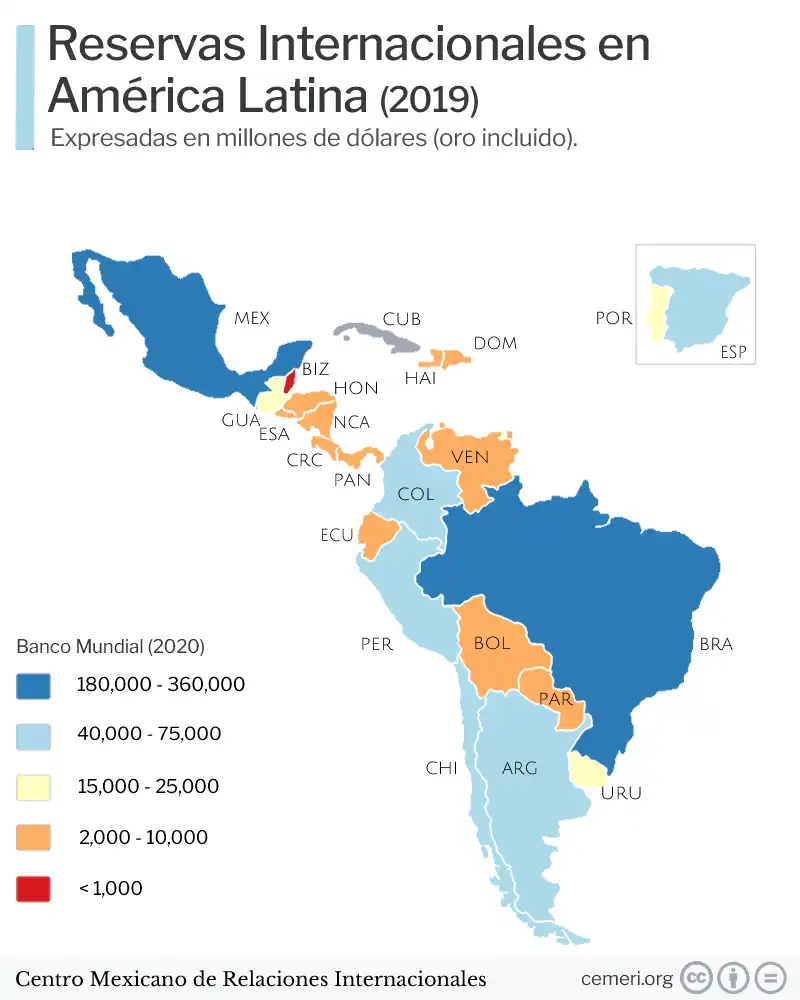Map
Luis Salgado
Water stress in Latin America
- Water stress is measured on a scale from 1 to 5, where 5 means 100% use of available water.

Water is essential for the progress of human societies. It is necessary for a healthy environment and a prosperous economy. Food production, electricity generation, and product manufacturing, among other things, depend on it. However, due to different factors, among them the lack of awareness and public policies, the water available for human use is less and less.
As water use increases, it becomes more difficult to access the resource sustainably. Humanity must learn to manage conflicts or towards better cooperation, as well as avoid crossing "planetary boundaries".
Given this, there is a way to measure how efficient a State is in managing its water resources. This is the “water stress” index, which measures what percentage of available water is being used (use-availability ratio).
Globally, water stress has been increasing over time, mainly due to increased water consumption, especially for water-dependent products such as food. Irrigation is the activity with the highest water use worldwide and in most regions.
Water stress can be considered demand driven scarcity while water scarcity is population driven. Stress can occur even with a small population if water use is high enough and water availability is low enough.
If water use is high, stress can be alleviated by reducing water use. Increasing the productivity of water means that the same products or services can be provided with less water use. Alternatively, less water-using products and services could be produced. Exports of water-intensive products could be reduced and imported instead from water-rich regions.
If water use cannot be reduced, stress can be alleviated by increasing water availability. Potential sources of water include desalination, inter-basin water transfers, and non-productive evaporative capture. Increased water storage can help if there are times with excess water.
Water Stress in Latin America
Water stress is measured on a scale from 1 to 5, where 5 means 100% use of available water. It is important to mention that States with a high use of their reserves does not necessarily mean that they are using high amounts of water. It may happen that they do not really have a large amount of water resources to begin with or they could have a bad management that results in water contamination and, therefore, in the impossibility of its use.
For 2019, these were the water stress indices in Latin America
| Status | Index | Percentage |
|---|---|---|
| Chili | 3.98 | 79.6 |
| Mexico | 3.86 | 77.2 |
| Spain | 3.74 | 74.8 |
| Portugal | 3.14 | 62.8 |
| Guatemalan | 2.36 | 47.2 |
| Peru | 2.05 | 41 |
| Venezuela | 2.03 | 40.6 |
| Cuban | 2.02 | 40.4 |
| Dominican Republic | 1.75 | 35 |
| Haiti | 1.74 | 34.8 |
| El Salvador | 1.66 | 33.2 |
| Equator | 1.59 | 31.8 |
| Argentina | 1.31 | 26.2 |
| Bolivia | 1.15 | 23 |
| Costa Rica | 0.92 | 18.4 |
| Brazil | 0.78 | 15.6 |
| Colombia | 0.65 | 13 |
| Belize | 0.62 | 12.4 |
| Honduras | 0.27 | 5.4 |
| Panama | 0.23 | 4.6 |
| Nicaragua | 0.21 | 4.2 |
| Paraguayan | 0.01 | 0.2 |
| Uruguay | 0.01 | 0.2 |
Sources
World Resources Institute (2019) Water Risk Atlas. Consultado el 07 de diciembre en https://www.wri.org/applications/aqueduct/water-risk-atlas

